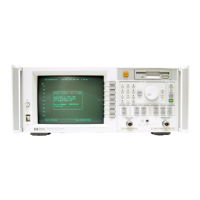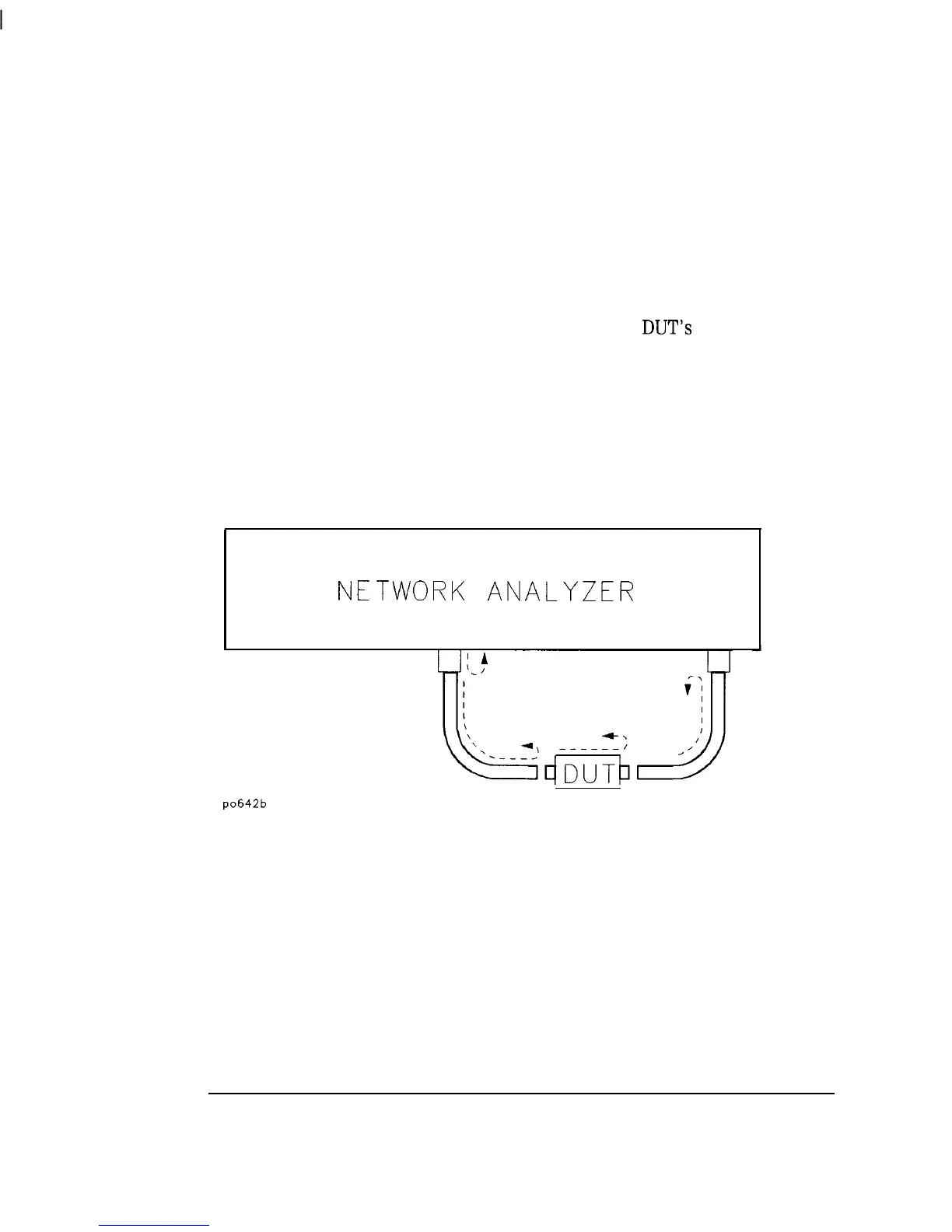I
-
Calibrating for Increased Measurement
Accuracy
Measurement Calibration Overview
Frequency response errors (transmission and reflection tracking) are errors
that are a function of frequency.
Isolation errors result from energy leakage between signal paths. In
transmission measurements, this leakage is due to crosstalk. In reflection
measurements, it is due to imperfect directivity.
Mismatch errors result from differences between the
DUT’s
port impedance
and the analyzer’s port impedance. Source match errors are produced on the
source (network analyzer RF OUT) side of the DUT; load match errors on the
load (network analyzer RF IN) side. If the DUT is not connected directly to
the port, the mismatch errors due to cables, adapters, etc. are considered
part of the source or load match errors.
NETWORK
ANALYZER
RF OUT
po642b
Figure 6-2. Mismatch Errors
RF IN
The analyzer has several methods of measuring and compensating for these
test system errors. Each method removes one or more of the systematic
errors using an equation called an error model. Measurement of high quality
standards (short, open, load, through) allows the network analyzer to solve
for the error terms in the error model. The accuracy of the calibrated
measurements is dependent on the quality of the standards used for
6-4
深圳市盛腾仪器仪表有限公司 Tel:0755-83589391 Fax:0755-83539691 Website: www.Sengt.com

